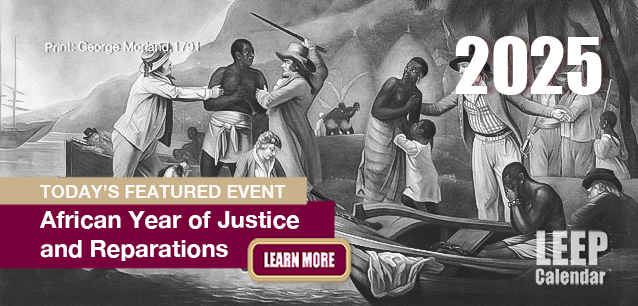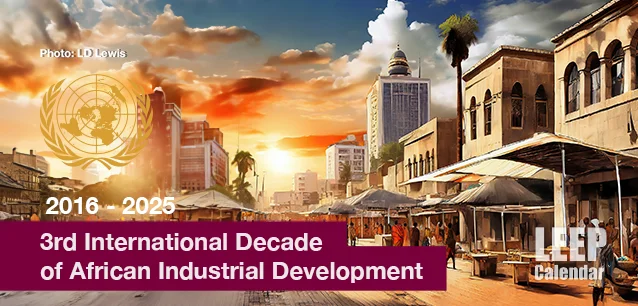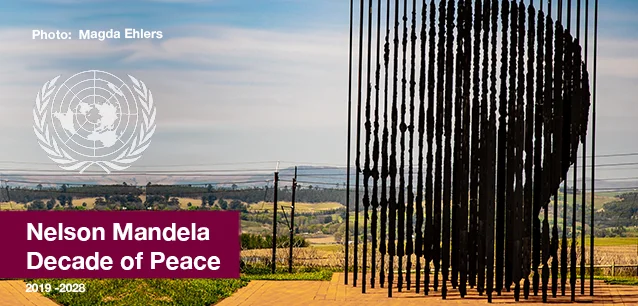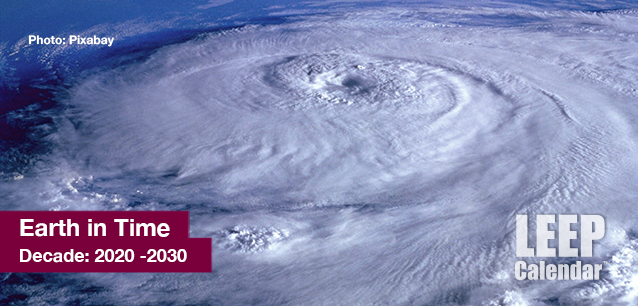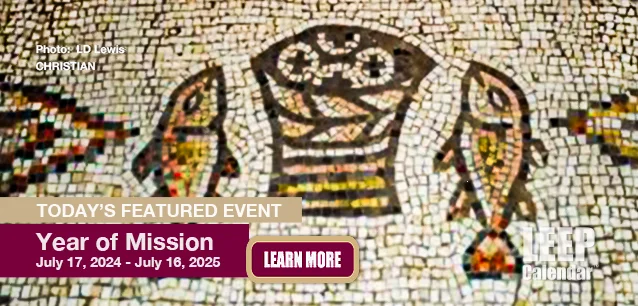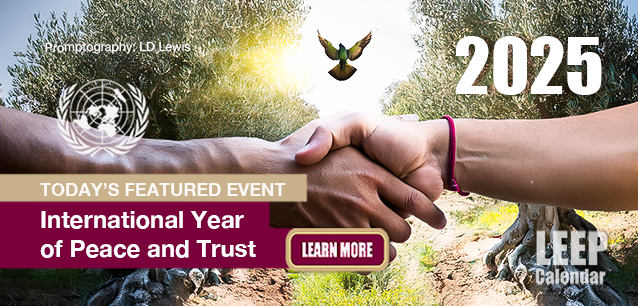 AD
AD
Country
- Africa
- Alcohol, Tobacco & Drugs
- Animals, Fish, Insects & Birds
- Anniversaries
- Australia
- Books
- Brazil & S.America
- Buddhism
Category
- Afghanistan, AF
- Aland Island, AX
- Albania, AL
- Algeria, DZ
- American, Samoa, AS
- Andarra, AD
- Angola, AO
- Anguilla, Al
Event Type
- Daily
- Weekly
- Annual
- Recurring
Duration
- All
- 1 Day
- 2 Day
- 3 Day
- 4 Day
- 5 Day
- 6 Day
Event Type
- Daily
- weekly
- Annual
- Recurring
Event Type
- Daily
- weekly
- Annual
- Recurring
Today is: October 15
Academic Integrity, Intl. Day of Action for
Blind Equality Day
Breast Reconstruction Awareness Day (BRA)
Cheese Curd Day, Ntl.(US/CA)
Fossil Day, Ntl.
Grouch Day, Ntl.
Hagfish Day, Ntl.
Handwashing Day, Global
Latino AIDS Awareness Day, Ntl.
Love Your Body Day, Intl.
Mushroom Day, Ntl.
Pregnancy and Infant Loss Awareness Day, Intl. (US/CA/UK/AU)
Pronouns Day, Intl.
Ride2Work Day (AU)
Rural Women (Day of), Intl.
Take Your Parents to Lunch Day, Ntl.
Unity Day to End Bullying
White Cane Safety Day
Anti-Poverty Week, (AU)
Bone and Joint Action Week, Ntl.
Case Management Week, Ntl.
Coffee Week, (UK)
Earth Science Week
Felabration (NG)
Food Bank Week, Ntl. (1945)
Foot Health Week (AU)
Infection Prevention Week, Intl.
MassKara Festival (PH)
Newspaper Week (JP)
Nutrition Week (AU)
OCD Awareness Week, Intl.
Pet Obesity Week, World
Pet Peeve Week, Ntl.
Recycle Now Week (UK)
Recycle Now Week (UK)
Recycle Week, Ntl. (UK)
School Lunch Week, Ntl.
Sterile Processing Week
Take Your Medicine Week, America
Urban Wildlife Week, Intl.
Veterans' Health Week (AU)
Veterinary Technician Week, Ntl.
Wildlife Refuge Week, Ntl.
ADHD Awareness Month
Adopt-a-Dog Month, (AHA)
Adopt-a-Shelter Dog Month
Alcohol Awareness Month, Collegiate Ntl.
Animal Safety and Protection Month, Ntl.
Antidepressant Death Awareness Month
Anxiety and Depression Awareness Month (AU)
Apple Month, Ntl.
Applejack Month
AquaTober
Architecture Month, Archtober
Arts and Humanities Month, Ntl.
Audiology Awareness Month, Ntl.
Autism Awareness Month (CA)
Bake and Decorate Month, Ntl.
Bat Appreciation Month
Battery Safety Month (Auto)
Bi-national Health Week (US/CA/MX-varies locally)
Big Draw, The
Bilingual Child Month, Celebrating the
Black History Month (UK)
Black Speculative Fiction Month
Bleeding Disorders Month, Ntl. (AU)
Blind Month, National Meet the
Blindness Awareness Month
Book Month, Ntl.
Breast Cancer Awareness Month, Ntl.
Bullying Month, Stop, Ntl.
Bullying Prevention Month, Ntl.
Caffeine Addiction Recovery Month
Car Care Month, Ntl. Fall
Caramel Month, Ntl.
Celiac Awareness Month (US)
Cheese Month, American
Chili Month, Ntl.
Chiropractic Health Month, Ntl.
Church Library Month
Church Safety and Security Month, Ntl.
Class Reunion Month
Clergy Appreciation Month
Co-op Advertising Awareness Month
Co-op Awareness Month
Company Culture Month, Global
Company Culture Month, Global
Computer Learning Month
Contact Lens Safety Month
Cookie Month
Corn Month
Country Ham Month
Country Music Month
Crime Prevention Month, Ntl.
Critical Illness Awareness Month
Cybersecurity Month, Ntl.
Danger Run (US-KY, IN, IL)
Dental Hygiene Month, Ntl.
Depression Education and Awareness Month
Dessert Month, Ntl.
Disability Employment Awareness Month
Diversity Awareness Month, Global
Domestic Violence Awareness Month
Down Syndrome Month, Ntl.
Dyslexia Awareness Month
Eat Better—Eat Together Month
Eczema Awareness Month
Emotional Intelligence Awareness Month
Energy Action Month, Ntl.
Ergonomics Month, Ntl.
Eye Injury Prevention Month
Fair Trade Month
Family History Month
Festival of Penha (BR-RJ)
Filipino American History Month (1587)
Financial Planning Month
Freethought, Month of, Ntl.
Gain the Inside Advantage Month, Ntl.
Gay and Lesbian History Month (1979)
German-American Heritage Month (1683)
Girls Night In (AU)
Go Sober Month (UK)
Golf Month, Australia
Great Cycle Challenge (AU)
Halloween Safety Month
Head Start Awareness Month
Health Literacy Month
Healthy Lung Month
Healthy Workplace Month (CA)
Hog-out Month (US-TX)
Home Eye Safety Month
Indigenous Peoples Month, Ntl. (PH)
Indoor Air Quality (IAQ) Month, Ntl.
Islamic History Month (CA)
Italian-American Heritage Month (1492)
Kartika (H)
Katik (S)
Kitchen and Bath Month, Ntl.
Learning Disabilities Month, Ntl. (CA/US)
Learning and Development Month, Ntl.
Liver Awareness Month, Ntl.
Long Term Care Planning Month
Lupus Awareness Month (UK)
Medical Librarians Month, Ntl.
Medicine Abuse Awareness, Ntl.
Menopause Month, World
Museums and Galleries Month (PH)
Muslim American Heritage Month (US)
Non-GMO Month, Ntl.
Organize Your Medical Information Month
Orthodontic Health Month, Ntl.
Pasta Month, Ntl.
Pedestrian Safety Month
Pescatarian Month, Ntl.
Pet Wellness Awareness Month, Ntl.
Pharmacist Month, American
Photographer Appreciation Month
Physical Therapy Month, Ntl.
Pickled Peppers Month
Pink Ribbon Breakfast (AU)
Pit Bull Awareness Month, Ntl.
Pituitary Awareness Month (UK)
Pizza Month, Ntl. (1984)
Polio Awareness Month, (CA/AU)
Polish-American Heritage Month
Popcorn Poppin' Month, Ntl.
Positive Attitude Month
Prenatal-onset GBS Disease Recognition Month
Pretzel Month, Ntl.
Principal's Month, Ntl.
Protect Your Hearing Month, Ntl.
Rabi al-Thani (M)
Reading Group Month, Ntl. (1917)
Rett Syndrome Awareness Month
Risk Awareness Week
Roller Skating Month, Ntl.
STEM Mentoring Month
Sarcastic Awareness Month
Sausage Month, Ntl.
School Libraries Month, Intl.
Seafood Month
Seed Gathering Seasons (UK)
Senior's Month (AU-QLD)
Sensory Awareness Month, Ntl.
Shoctober - Defibrillator National Awareness Month (AU)
Spina Bifida Awareness Month, Ntl.
Spinach Lovers Month
Spinal Health Month, Ntl.
Squirrel Awareness and Appreciation Month
Stamp Collecting Month, Ntl
Stop America's Violence Everywhere (SAVE) Month
Substance Abuse Preservation Month, Ntl.
Sudden Infant Death Syndrome (SIDS) Awareness Month
Sunday School Teacher Appreciation Month
Teentober
Tishrei (J)
Turner Prize Exhibition (UK)
U.S.-Mexico Border Health Month
Ultrasound Awareness Month
Unblocktober (UK)
Urban October
Vegetarian Month
Walk To School Month, Intl.
Wild About Gardens Week (UK)
Window Covering Safety Month, Ntl.
Winter Weather Preparedness Weeks (Varies by Location)
Wishbones for Pets (US/CA)
Women's History Month (CA)
Women's Small Business Month
Work and Family Month, Ntl.
Workplace Politics Awareness Month
Youth Justice Action Month, Ntl.
LEEP Calendar
Scroll to explore events active on this date.
Additional Events on LEEP
LEEP INK FEATURES

August? Absolutely!
In August, we live through the Dog Days of Summer. It's hot and often humid, and those who can leave for better climates do. Down south, winter is in full force. August is also known as "the ...

In The Heat of July: July 2025 Events
Is it hot enough (or cold enough if you're below the equator) for you yet? There is actually a day for that! Like every month, I pick a diverse collection of events you may or may not know about. This ...

May Blooms: Events in May 2025
Along with October, May is one of the most densely packed months of the year. It's before the summer humidity and the last whole month of the school year. The weather is warming in t...
About Student's Day in Iran
Civil Rights , Education
Middle East/West Asia
Ends: Dec 07, 2022
DESCRIPTION:
Student's Day in Iran honors three student protesters martyred on December 7, 1953, for freedom of speech and the right to assemble.
December 7, 1953, Tehran University students gathered to protest the upcoming December 9 arrival of American Vice President Richard Nixon. The peaceful protests were met with a 'Shoot to Kill' order from the Shah's security forces. Three student protesters, Mostafa Bozorgnia, Ahmad Ghandchi, and Mehdi Shariat-Razavi, were killed. Though the public remembers the martyrs each year after that, the Shah's security services would ruthlessly pursue and dissuade anyone from recognizing their sacrifice during his rule.
Immediately following the 1979 revolution and the overthrow of the Shah, Student's Day became a symbol of the nation's displeasure with American foreign policy. Over the next few decades, under the strict rule of the Ayatollahs, Student's Day was used by the people to voice opinions about their current rulers, in addition to foreign nations, which did not sit well with the religious and political leaders. As in the Shah's day, the Islamic leaders actively repressed dissent and free speech, bringing the Iranians back full circle to 1953 without the bullets.
By 2009, rules were relaxed, and celebrations of Student's Day could be observed, provided celebrants were not critical of the Iranian government or its religious leaders.
WHY IS THERE ANIMOSITY BETWEEN IRAN AND THE WEST?
Most animosities between the west and Iran began in August 1953, four months before the students were killed.
In January 1953, Iran was a nascent yet thriving democracy and the region's most progressive and wealthy nation. Its natural resources, highly educated society, and forward-thinking prime minister Mohammad Mosaddeq, projected a bright future for the west Asian country.
Mosaddeq was a man of the people. He believed his nation's natural resources and the wealth it generated should belong to and benefit all Iranians rather than foreign governments or wealthy individuals, thereby creating a problem for two other countries, the United States and Great Britain. Both nations had invested heavily in oil exploration within the region since the 1920s. Nationalized oil would prevent British and, to a lesser extent, American companies from fully profiting and impacting their nations' influence in the region. But oil isn't Iran's only natural resource. Iran has a variety of ecosystems, minerals, water, and sources of wealth, giving it a well-rounded economic footing in multiple markets not shared by its Gulf neighbors.
Prime minister Mosaddeq's ideas would make the Persian nation less amenable to foreign stewardship and coaxing while protecting it from the internal corruption of its monarchal past. Mosaddeq wanted to return the country to its geopolitical and cultural importance while elevating the quality of life of his people. Not everyone was happy, particularly nations hoping to control the resources and the new government, as well as former loyalists of the monarchy within Iran.
On August 19, 1953, agents of the CIA, MI-6, and various dissenting factions within the Iranian population, orchestrated a coup, overthrew the prime minister, and reinstalled the exiled Shah (king) in power. Mohammad Mosaddeq went into hiding, and martial law was declared. The secret police began arresting, imprisoning, and tracking dissenters.
The Shah, a brutal ostentatious dictator, ruled without mercy and deferred to western powers who helped him stay in control—until his people overthrew him in 1979. The Hostage Crisis, culminating with the storming and occupation of the US embassy in Tehran for 444 days, is one of the most well-known events of that year. The United States is the primary reason the Iranians lost their democracy and suffered for 25 years under the Shah. It's why the students protested in 1953, and it's why students occupied the US embassy.
Concurrently in 1979, animosity between Persian Iran and its Arab neighbors escalated. It is also the year much of the Islamic world pivoted toward austere conservativism. However, the why on that pivot is a story for another day.
Over the next decade, animosity developed between Iran and the Gulf states. Iraq invaded Iran, and that war continued for nearly a decade. Americans deeply embarrassed by the hostage crisis remained steadfastly parochial, and the third spoke in the wheel, Israel, decried Iran as a threat.
Contrary to perceived wisdom, the threat Israel sees is not due to Iran's nuclear capabilities, which Israel has had since 1963 and Iran has never had. It's not due to religion (Iran has a robust Jewish population). The reason is far simpler. Strategically positioned between Asia and Europe, Iran is a nation of 84 million people (versus Israel's nine million, Saudi Arabia's 36 million, and the United Arab Emirates' ten million) with vast natural resources (including ample fresh water) and well-educated citizens. Absent sanctions and permitted self-determination, Iran has the potential to outperform Israel and the Gulf states militarily, economically, and, therefore, influentially. When you peel away the excuses, the core reasons for fear are power, influence, and money—like always. Nothing more.
So decades later, the dance of Iran's containment continues with sanctions, vilification, and accusations. However, the events of fall 2022 in Iran, with the protests over the death of 22-year-old Mahsa Amini in police custody, surpassed the outcry of Iranian students in 1953 and gained world admiration. The people of Iran appear ready for change, making the question, will the world allow them that chance?
We shall see.
Review the events of the 1953 coup via the US National Security Archives:
https://nsarchive2.gwu.edu/NSAEBB/NSAEBB435
VIDEOS
Currently, this event does not have supporting videos.
SUPPORTING DOCUMENTS
Currently, this event does not have supporting documents.
ADDITIONAL IMAGES
Currently, this event does not have supporting images.
Where would you like to go now?
 AD
AD
By using this site. You are agreeing to use of cookies. Learn more in our Privacy Policy
/footer-logo.svg)
LEGAL: Excerpts and links may be used, provided that full and clear attribution is given to Jubilee LLC and LEEPCalendar.com, with appropriate and specific direction to the original content (Page URL). Additional documents, embedded videos and additional image rights retained by their creators and are provided to increase understanding of the event or topic.
Jubilee LLC reserves the right to accept or reject inclusion of events in this calendar. The appearance of an event in LEEP Calendar does not imply endorsement of the event, nor the organization championing the event by Jubilee LLC, its stakeholders, customers or subsidiaries. All dates, contact information, URLs, addresses, and information relating to any event, promotion or holiday are subject to change without notice and should be treated as estimated. Jubilee LLC, our stakeholders, customers and subsidiaries cannot warrant accuracy. Users of this application are solely responsible for verifying actual event date with organizers and additional sources prior to committing resources, financial, human or otherwise.





